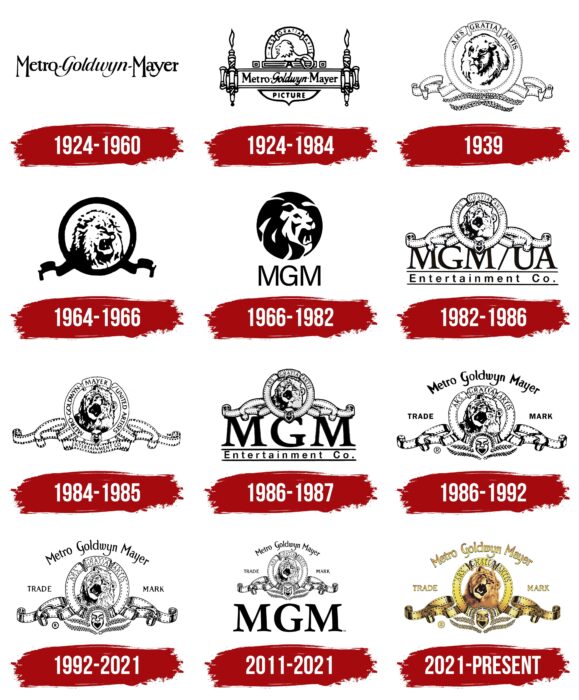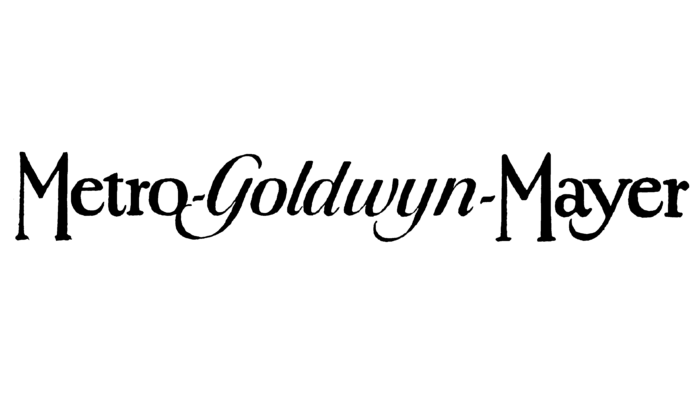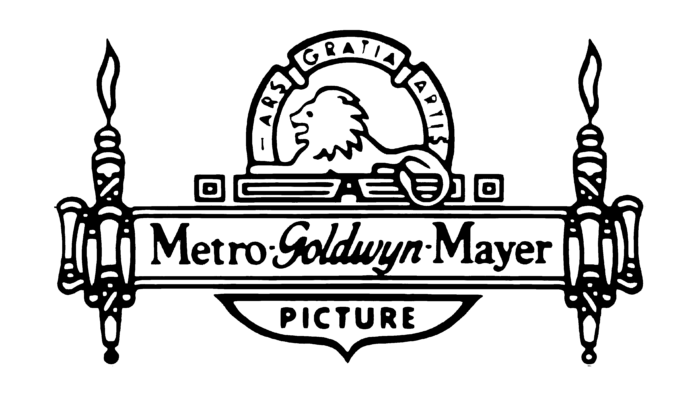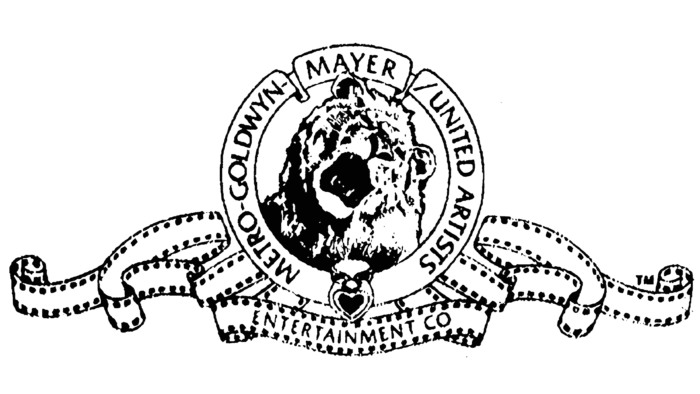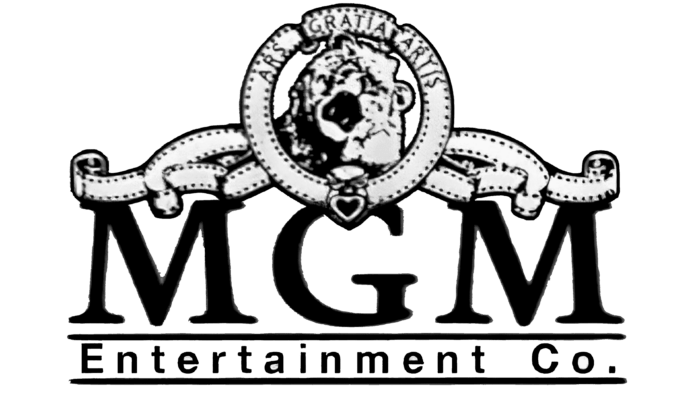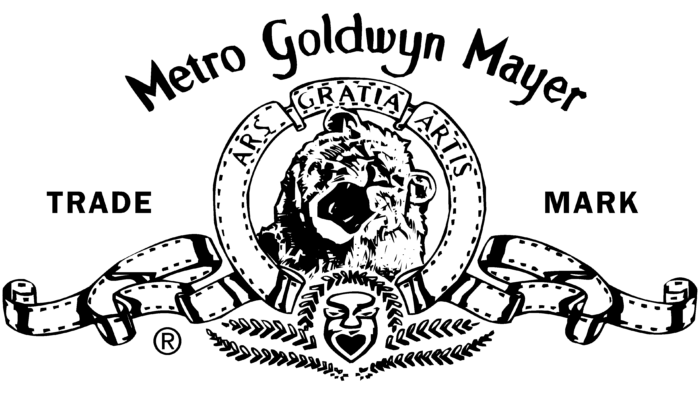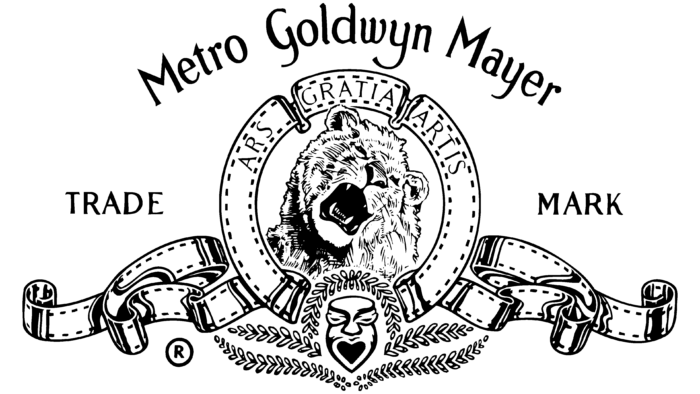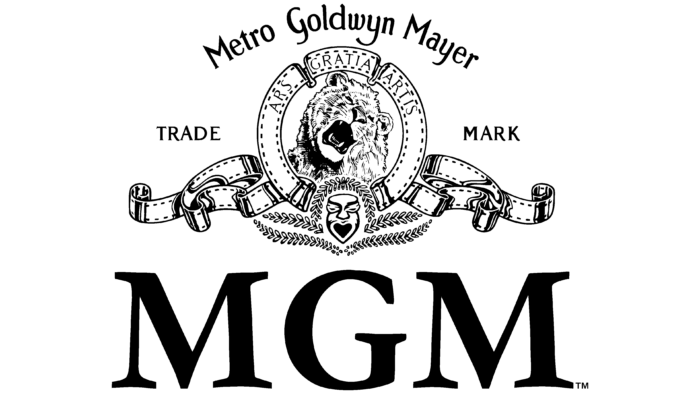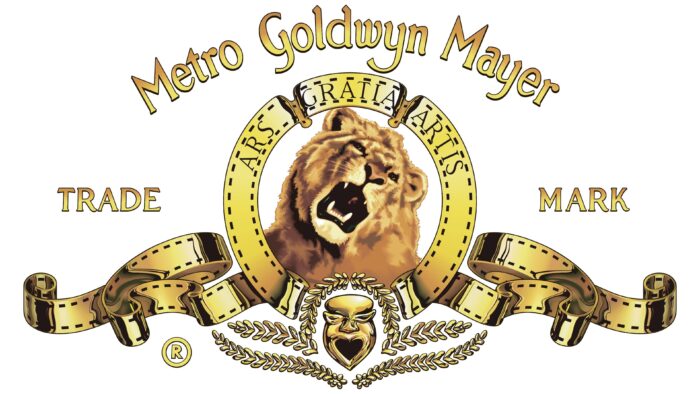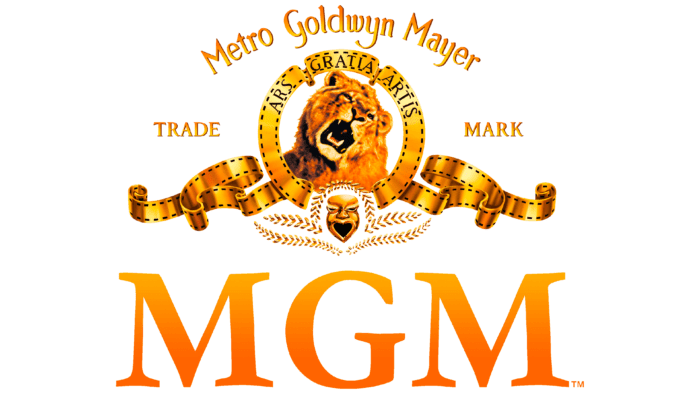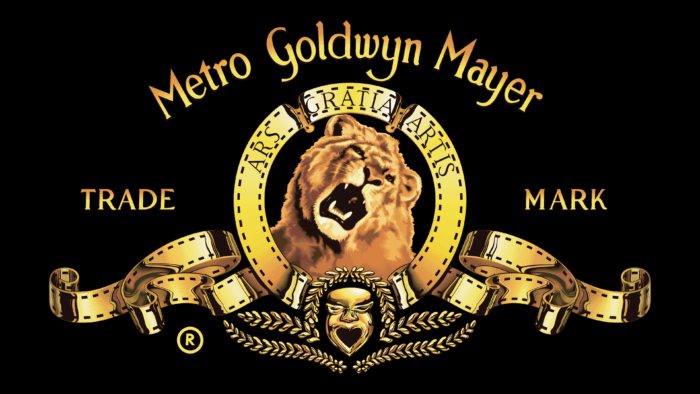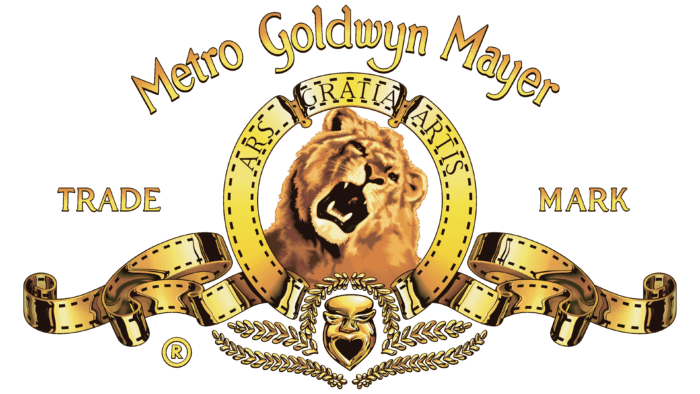 MGM (Metro-Goldwyn-Mayer) Logo PNG
MGM (Metro-Goldwyn-Mayer) Logo PNG
Tension, surprise, and vivid emotions are captured in the film studio. The MGM logo shows a leader in its field. Pictures Metro-Goldwyn-Mayer was awarded the highest awards in the field of cinema. The sign promises that all viewers will be interested.
MGM (Metro Goldwyn Mayer): Brand overview
| Founded: | April 17, 1924 |
| Founder: | Marcus Loew, Louis B. Mayer |
| Headquarters: | Beverly Hills, California, US |
| Website: | mgm.com |
Meaning and History
Only Goldwyn Pictures Corporation had a distinctive symbol of the three companies that became part of Metro-Goldwyn-Mayer. It was the one that served as the basis for the modern studio’s logo. The original version was created in 1916. It contained a lion’s head placed in a ring of film diafilm. The loose edges of the tape dangled down the sides. On the left was the word “TRADE,” and on the right was “MARK.” At the top of the circle was the inscription “ARS GRATIA ARTIS.” As the author of the design and advertising expert Howard Dietz admitted, this profound Latin phrase was a favorite phrase of a linguistics professor he knew.
The image of the animal was inspired by a drawing on the cover of Columbia’s student magazine, the name of the university’s sports teams, and their song Roar, Lion, Roar. The mask depicted below may have been added because Goldwyn’s first lion came from an African state. It is a kind of tribute to his origins. The same role was played by the pattern of fern-like leaves surrounding the mask.
The antique trademark Goldwyn in 1924 was taken over by MGM. It gradually evolved but retained its original structure. Even now, you can see one version of the lion in a ring of film in the opening credits of the films. But this is not the same animal that appeared on the screen in the late 1910s. The television studio has changed almost ten lions over its century-long history. The most famous of them are Tanner, who appeared in the golden era of MGM, and the long-lived Leo with a short mane. Screensavers with different lions were used simultaneously, which makes it difficult to determine the chronology of the logos.
1924 – 1960
The text sign contained the name of the studio, written in two fonts. An elegant antiqua with short serifs was chosen for “Metro” and “Mayer,” and a cursive grotesque for “Goldwyn.”
1924 – 1984
There was a version in which the inscription “Metro-Goldwyn-Mayer” was placed on a scroll with two torches around the edges. At the top was a statue of a lion lying on a pedestal under an arch with the motto “ARS GRATIA ARTIS.” At the bottom, in a convex figure, was the word “PICTURE.” This emblem was shown very rarely. The last time it appeared was in the film Nothing Lasts Forever.
1939
The menacing silent lion on the logo was reminiscent of Jackie, who worked for MGM from 1928 to 1956 and acted in hundreds of films. The animal’s head was inside a ring made from film tape. The tape had a characteristic double-sided perforation and contained the familiar phrase “ARS GRATIA ARTIS. At the bottom were two branches of either a fern or a laurel.
1964 – 1966
The head of the roaring lion was inside a black ring with the same black ribbons around the edges. The Latin utterance has disappeared, as has the plant ornamentation.
1966 – 1982
In 1965 MGM approached the Lippincott agency to update its image. The collaboration resulted in a new printed logo known as The Stylized Lion. This version debuted in the Grand Prix film and remained current until 1982. The designers depicted a snarling lion’s head inside a circle and used a negative space effect: white lines and outlines were shaped by the surrounding black area. At the bottom was the acronym “MGM,” which was written in grotesque font Helvetica the bottom.
1982 – 1986
In 1981 the studio bought United Artists, after which it changed its name to MGM / UA Entertainment Company. At the same time, the logo returned with a real lion inside a ring of film diafilm. An African mask appeared at the bottom of the circular frame and the phrase “ARS GRATIA ARTIS” in the upper half. Beneath the picture was a two-level inscription. The first line was occupied by the abbreviations “MGM / UA,” which used a serif font. Just below, between the two horizontal lines, was the word combination “Entertainment Co.” written in grotesque.
1984 – 1985
The lower text was removed. The motto also disappeared and replaced the full company name: “METRO-GOLDWYN-MAYER / UNITED ARTISTS.” The words “ENTERTAINMENT CO.” have been placed on an additional ribbon added at the bottom. The ring without the perforations looked like a heraldic scroll rather than a film.
1986 – 1987
In early 1986, the company changed its name and updated its logo. It was back to the 1982 version, but with different lettering – no “UA.” The detailing of the lion decreased slightly.
1986 – 1992
After only a few months as MGM Entertainment Company, the studio rebranded itself again as Metro-Goldwyn-Mayer. Its new graphic symbol looked like a copy of the emblem used by Goldwyn Pictures Corporation, only the edges of the tapes were perforated. An ornament of leaves surrounded the mask. A ring with a lion’s head was between the words “TRADE” and “MARK,” and an arch-shaped company name was written on top.
1992 – 2021
The designers made the lines thinner to make the image clear. The words “TRADE MARK” and the registered trademark mark were enlarged.
2011 – 2021
The “R” symbol in the circle has disappeared. The large black abbreviation “MGM” was added at the bottom.
2021 – today
The studio first unveiled its new logo on March 8, posting it on YouTube. And in mid-August, it debuted with the movie Respect. This time, the live snarling lion was replaced by an animated character. And the company didn’t simplify the design – on the contrary, it made the image gold and added a 3D effect due to the gradient. But at the same time, all the details and elements correspond to the original.
MGM (Metro Goldwyn Mayer): Interesting Facts
Metro-Goldwyn-Mayer Studios Inc. (MGM), known for its roaring lion logo, stands as a towering figure in the entertainment industry with a history rich in classic films and innovation.
- Origin: MGM came to life in 1924, merging Metro Pictures, Goldwyn Pictures, and Louis B. Mayer Pictures under Marcus Loew’s ambition to forge a leading film production and distribution powerhouse.
- Iconic Logo: Its lion logo, with Leo the lion, surrounded by the motto “Ars Gratia Artis” (Art for Art’s Sake), is a universally recognized cinema symbol.
- Hollywood’s Golden Age: At its peak, MGM was the crown jewel of Hollywood, celebrated for its grand productions and constellation of stars, living up to the claim of having “more stars than there are in the heavens.”
- Memorable Movies: MGM’s portfolio includes timeless classics like “Gone with the Wind,” “The Wizard of Oz,” and “Singin’ in the Rain,” which have deeply influenced popular culture.
- Musical Mastery: The studio set the gold standard for musicals, featuring legends like Judy Garland, Gene Kelly, and Fred Astaire in spectacular song and dance showcases.
- Oscar Glory: MGM’s productions have collected numerous Oscars, with “Ben-Hur” famously sweeping 11 awards, a record it shares with “Titanic” and “The Lord of the Rings: The Return of the King.”
- The MGM Grand Fire: In 1980, the MGM Grand Hotel fire in Las Vegas, then owned by MGM, became one of the deadliest U.S. fires, leading to widespread safety reforms in hotel and building standards.
- Financial Ups and Downs: Despite financial turmoil, including a 2010 bankruptcy, MGM has resiliently bounced back, maintaining its influence in film and TV production.
- Joining Amazon: In 2021, Amazon announced its acquisition of MGM for $8.45 billion, intending to enrich Amazon Prime Video with MGM’s vast film and TV show archive.
- James Bond Legacy: Among MGM’s prized assets is the James Bond series, cinema’s most enduring and successful franchise, co-owned with Eon Productions.
MGM’s journey mirrors Hollywood’s broader saga—marked by creativity, grandeur, and perseverance; it has continually adapted and thrived, contributing significantly to the cinematic arts.
Font and Colors
The computer graphics visualized the real lion Leo, which was MGM’s seventh. He has a short mane because he was still a teenager at the time of the first shooting. Leo is depicted on all the studio’s emblems after 1982. The static drawings depict his growl, recorded in 1957 for a movie splash screen. The company decided to update the design and replace the real lion with a fake one. The perforated bar remained not only as a tribute to history but also as a tribute to film art.
The current logo features at least four different fonts. The letters in the phrase “Metro Goldwyn Mayer” have similar roundings and the same shape. Still, the second word uses a typeface reminiscent of ITC’s Hadfield, while the first and second use something remotely similar to Göran Söderström’s Heroine. Other serif typefaces were chosen for the words “TRADE MARK” and “ARS GRATIA ARTIS.” The gradient gold color corresponds to the Art Deco style that MGM originally adhered to.
MGM (Metro Goldwyn Mayer) color codes
| Aztec Gold | Hex color: | #c48f4b |
|---|---|---|
| RGB: | 196 143 75 | |
| CMYK: | 0 27 62 23 | |
| Pantone: | PMS 7510 C |
| Straw | Hex color: | #ecdf6c |
|---|---|---|
| RGB: | 236 223 108 | |
| CMYK: | 0 6 54 8 | |
| Pantone: | PMS 610 C |
| Licorice | Hex color: | #221616 |
|---|---|---|
| RGB: | 34 32 32 | |
| CMYK: | 0 35 35 87 | |
| Pantone: | PMS Neutral Black C |
